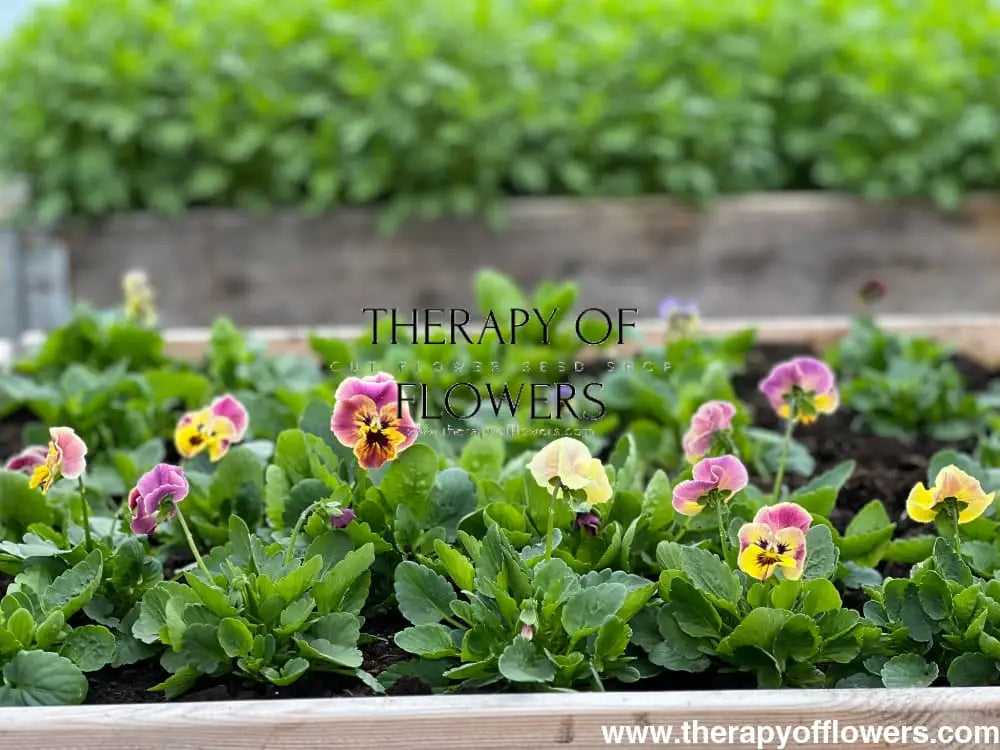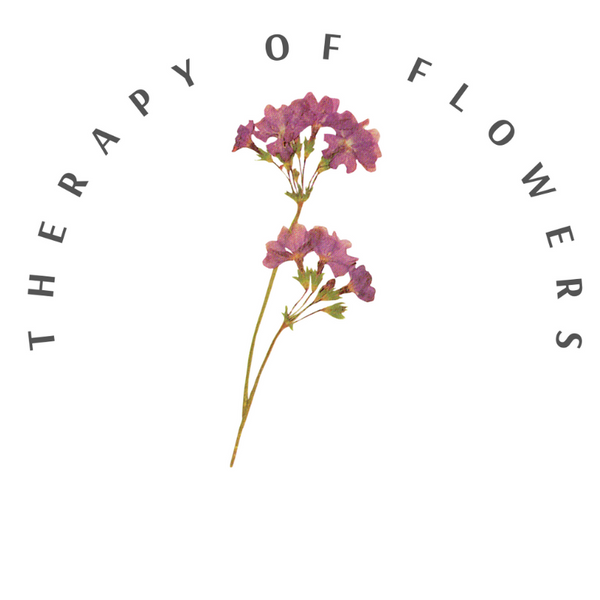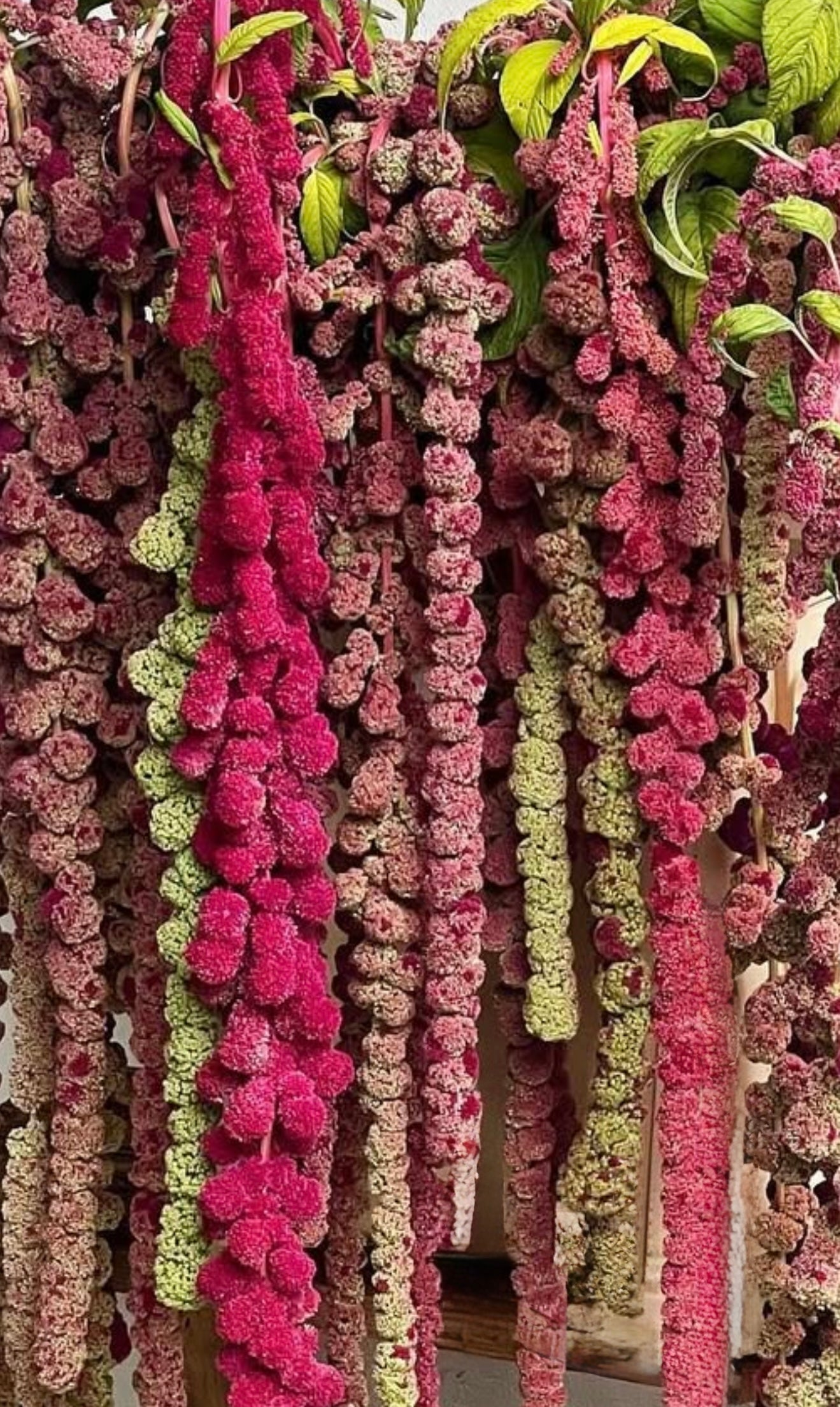
How to Grow Pansies and Violas from Seed for Cut Flower Arrangements
Dalīties
Pansies and violas are not just cute bedding plants - they can be stunning stars in cut flower arrangements, too! With their cheerful “faces,” rich colors, and delicate fragrance, they bring charm and a touch of nostalgia to any bouquet. In this post, we’ll guide you through growing pansies and violas from seed all the way to beautiful vase-ready blooms.
Why Grow Pansies and Violas for Cutting?
Most people grow pansies and violas for containers or borders, but they actually make great cut flowers if you choose the right varieties. Here's why they're worth growing for arrangements:
- Long blooming season in cool weather
- Compact but productive plants
- Unique colors and patterns
- Fragrant (especially violas!)
- Perfect for small vases or posy-style bouquets
If you want your pansies to grow tall stems for bouquets, it’s best to plant them close together—about 5 to 10 cm apart. You can grow them in a raised bed or mix them in with other flowers that help support them as they grow taller. I have a few raised beds just for pansies, but I also like to grow them in between my roses, phlox, and sweet peas to add variety and color.
Step 1: Choose the Right Varieties
Not all pansies and violas are ideal for cutting. Look for those bred for:
- Beautiful flower colors and unique flowers
- Taller stems
- Good vase life
- Violas and pansies have a great vase life: 4–8 days
Recommended varieties for Cut Flower Use:
Viola x wittrockiana (Pansies)
‘Flamenco Terracotta F1’ – Warm apricot, bronze, and pink tones with strong stems
‘Chianti F1’ – Raspberry red streaks and frilly petals
‘Caramel Bronze Lilac F1’ – Soft, romantic tones for delicate spring arrangements
‘Frizzle Sizzle Yellow Blue Swirl’ – Ruffled petals with playful color contrast
‘Moulin Rouge Mixed F1’ – Rich, dramatic blooms with deep velvet hues
Viola cornuta (Horned Violets)
‘Tiger Eye Mix F1’ – Highly fragrant with golden petals marked by fine purple lines
‘Frizzle Sizzle Mini Tapestry’ – Compact blooms with a colorful, tapestry-like mix
Cornuta Hybrids – Smaller flowers, but they produce in abundance with sweet fragrance
Special Mention:
‘Flamenco Soft Light Azure Lemonade’ – A dreamy “mermaid” color mix with pastel tones in blue, yellow, and soft green
Step 2: Start from Seed Indoors
Timing:
Pansy and viola seeds should be kept in a fridge or cold place at around 4°C when you're not planting them. You can start the seeds indoors about 12 weeks before your last spring frost to get flowers in spring and summer. Just make sure they have the right temperature and plenty of light to grow well.
How to Sow:
- Use trays or pots filled with fine seed-starting mix.
- Place 1 to 3 seeds on top of the soil in each cell. I don’t cover the seeds because they sprout faster when left uncovered. Press only lightly - do not cover with soil (they need also light for germination).
- Mist gently and cover with a dome or plastic.
- Pansies grow best when their roots stay cool, and they become strong, healthy plants if you let them grow in natural conditions.
-
Once the young pansy plants have 2 to 3 sets of true leaves and the outdoor temperature stays above 0°C, I move them into my unheated greenhouse.
This year, I planted my pansys around February 20, 2025.
Germination Tips:
Temperature: 15–20°C, Avoid heat mats.
Time: 7–21 days. Check daily.
Once sprouted, move to a bright windowsill or under grow lights. Remove covers.
Step 3: Encourage Long, Strong Stems
1. When pansies and violas are planted close together, they naturally stretch upward to reach the light instead of spreading out sideways. This helps them grow taller stems, which is great for cutting and arranging. I noticed that spacing them about 7–8 cm apart made a big difference—they grew straight and tall, just right for bouquets.
2. Some gardeners prefer a bit more space, around 10–15 cm, which also works well. The most important thing is to find the right balance—close enough for height, but with enough airflow to keep the plants healthy and prevent mold or rot.
3. Many gardeners remove pansies and violas around the last frost date to make space for summer annuals. But if you're growing them for cut flowers, consider leaving them in longer into spring. That’s when stem length really starts to improve. Why? Because of light and temperature.
4. The length of a flower’s stem is largely controlled by the internodes—the segments between leaves on the stem. In pansies and violas:
-
- Cool temperatures and short days (like in winter) = short internodes and compact growth
- Warmer temperatures and longer days (spring!) = longer internodes and taller, cut-worthy stems
So if you’re growing for bouquets, your best stems will come in spring, once days get longer and warmer.
5. Pinch the first buds to encourage branching
6. Fertilize every 2–3 weeks with a balanced flower fertilizer
8. Deadhead regularly to keep plants blooming
9. Use stakes or flower nets for taller varieties
Step 4: Harvest and Arrange
When to Cut:
- Early morning is best, when flowers are full of moisture.
- Choose stems with just-opening blooms for longest vase life.
How to Cut:
- Use clean, sharp scissors.
- Cut stems at an angle.
- Immediately place in a container of cool water.
Vase Life:
- Pansies and violas can last 4–7 days in water.
- Remove leaves below the water line to prevent rot.
- Refresh water daily for best results.
Bonus Tips
- Succession sow every few weeks in spring and late summer for continuous blooms.
- Use violas in mini arrangements, teacups, or small glass vases.
Growing pansies and violas from seed for cut flower arrangements is a delightful way to bring seasonal charm indoors. Whether you're crafting petite posies for your home or gathering stems for a market stall, these petite blooms add personality and cheer.
Starting them from seed isn’t just cost-effective - it’s also deeply rewarding. While some specialty varieties may have lower germination rates, don’t be discouraged. With a little patience and care, you’ll discover that pansies and violas are more forgiving than their reputation suggests. Plus, growing from seed gives you access to far more unique colors, forms, and fragrances than what you’ll typically find at a garden center.
So grab your seed trays, pick your favorites, and enjoy the journey from soil to stunning bouquet - one cheerful bloom at a time.










